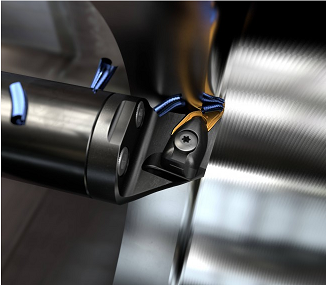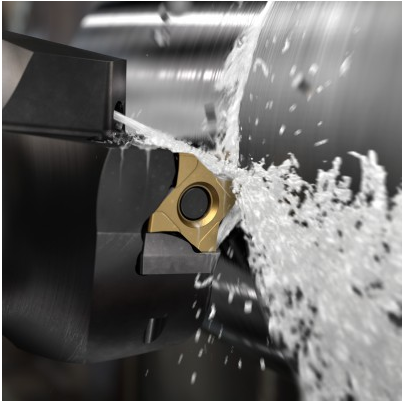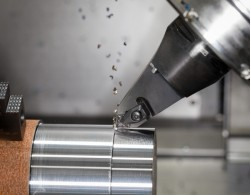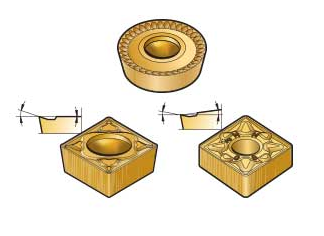Turning Material Basic Introduction
The most common material we used in the lathe is steel, including carbon steel and stainless steel.
Steel can be divided into non-alloy, low-alloy and high-alloy, all of which will affect the processing considerations for turning.

Turning material---non-alloy steel
The carbon content of unalloyed steel is as high as 0.55%. We should pay special attention to low carbon steel (carbon content <0.25%, because it is difficult to chip breaking and easy to smear (stacked edges).
In order to break and manipulate the chips, we must strive for the highest possible feed. It is strongly recommended to use the wiper insert.
Use high cutting speeds to avoid the accumulation of edges on the insert, which will negatively affect the surface. Sharp edges and light cutting geometry will reduce tailing and prevent edge deterioration.

Turning material---low alloy steel
The workability of low alloy steel depends on the alloy content and heat treatment (hardness). For all materials in this group, the most common wear mechanisms are crescent craters and side wear. For hardened materials, plastic deformation is also a common wear mechanism due to the high heat in the cutting area.
For low-alloy steel in a non-hardened state, the first choice is the series and grade of steel series. Among hardened materials, it is beneficial to use higher hardness grades (cast iron grade, ceramic and CBN).

Turning material---high alloy steel
High-alloy steel includes carbon steel with a total alloy content exceeding 5%. This group includes soft materials and hardened materials. When the alloy content and hardness are high, the machinability decreases.
For low-alloy steels, the first choice is the steel type and geometry.
Steels with an alloying element content of more than 5% and hardness exceeding 450 HB require higher resistance to plastic deformation and edge strength. Harder grades (cast iron grade, ceramic and CBN) can be taken into consideration.
Turning material---stainless steel
Stainless steels can be divided into ferritic/martensitic, austenitic and duplex (austenitic/ferritic), each of which also has its own turning recommendations.
Turning material---ferritic and martensitic stainless steel
The stainless steel is classified as steel, so its material is classified as P5.x. The general processing recommendation for this type of steel is our stainless steel grade and geometry.
Martensitic steel can be processed under hardened conditions, which requires additional requirements for the plastic deformation of the insert. Consider using CBN grade, HRC = 55 and higher.
Turning material---austenitic stainless steels
Austenitic stainless steel is the most common type of stainless steel. This group also includes super austenitic stainless steels, defined as stainless steels with a nickel content exceeding 20%.
The recommended grades and geometries are our CVD and PVD grade stainless steel products.
For intermittent cutting, or wear mechanisms that are mainly chip hammering or clogging, consider using PVD grades.
Other considerations:
1)Always use coolant to reduce crater wear and plastic deformation, and choose the largest tip radius, learn more about coolant.
2)Use round blades or small entry angles to prevent notch wear
3)Smearing tendencies or accumulation edges are common. They all have a negative impact on surface finish and tool life.
4)The front face should use sharp edges and/or geometric shapes.
Turning material---duplex (austenitic/ferrite) stainless steel
For higher alloy duplex stainless steels, names such as super or even super duplex stainless steels are used. The higher mechanical strength makes these materials more difficult to process, especially in terms of heat generation, cutting force and chip control.
The recommended grades and geometries are our CVD and PVD grade stainless steel products.
Other considerations:
1)Using coolant can improve chip control and avoid plastic deformation.
2)Use tools with internal coolant supply, preferably precision coolants, to learn more about coolants
3)Use a small entry angle to avoid scoring wear and burr formation.



